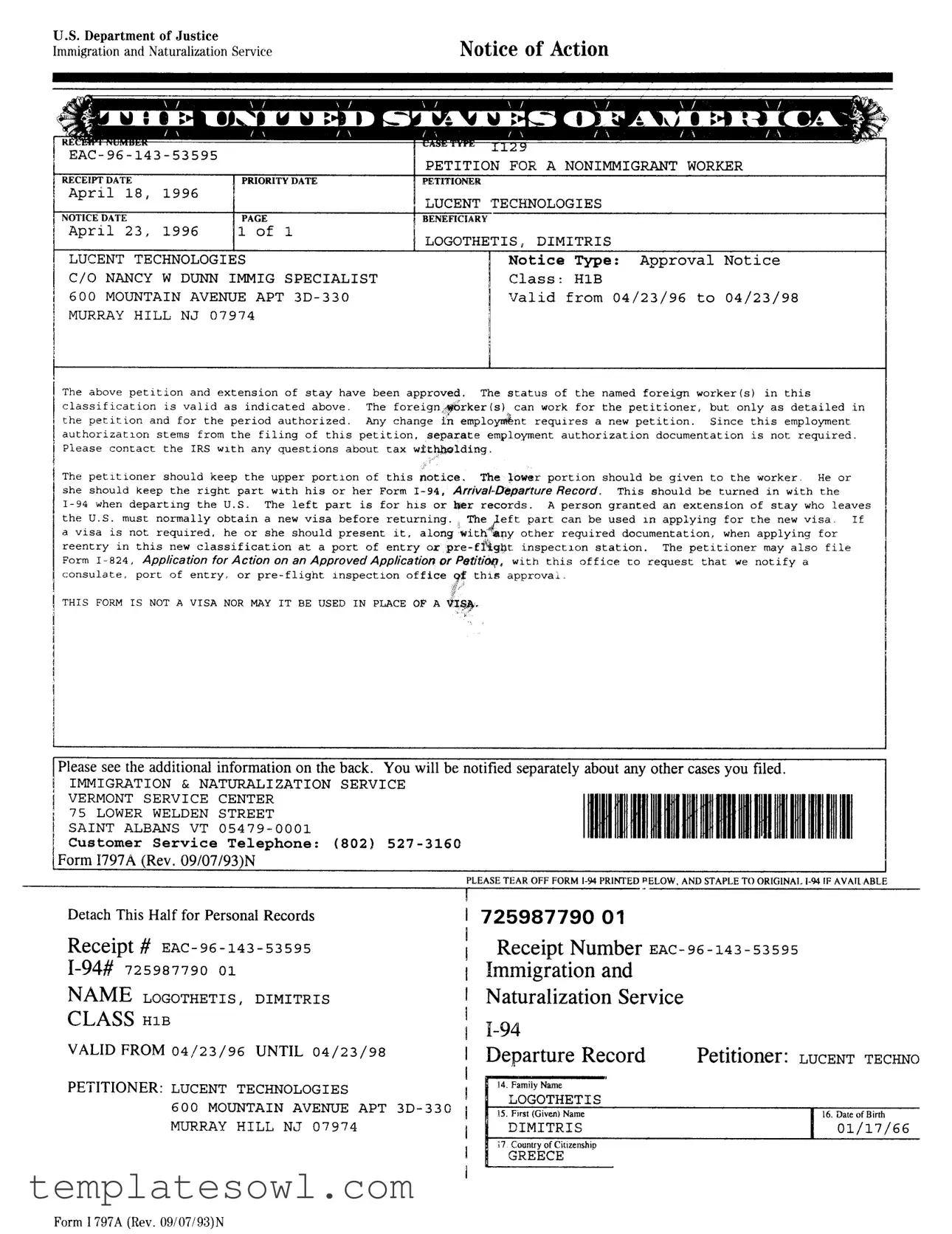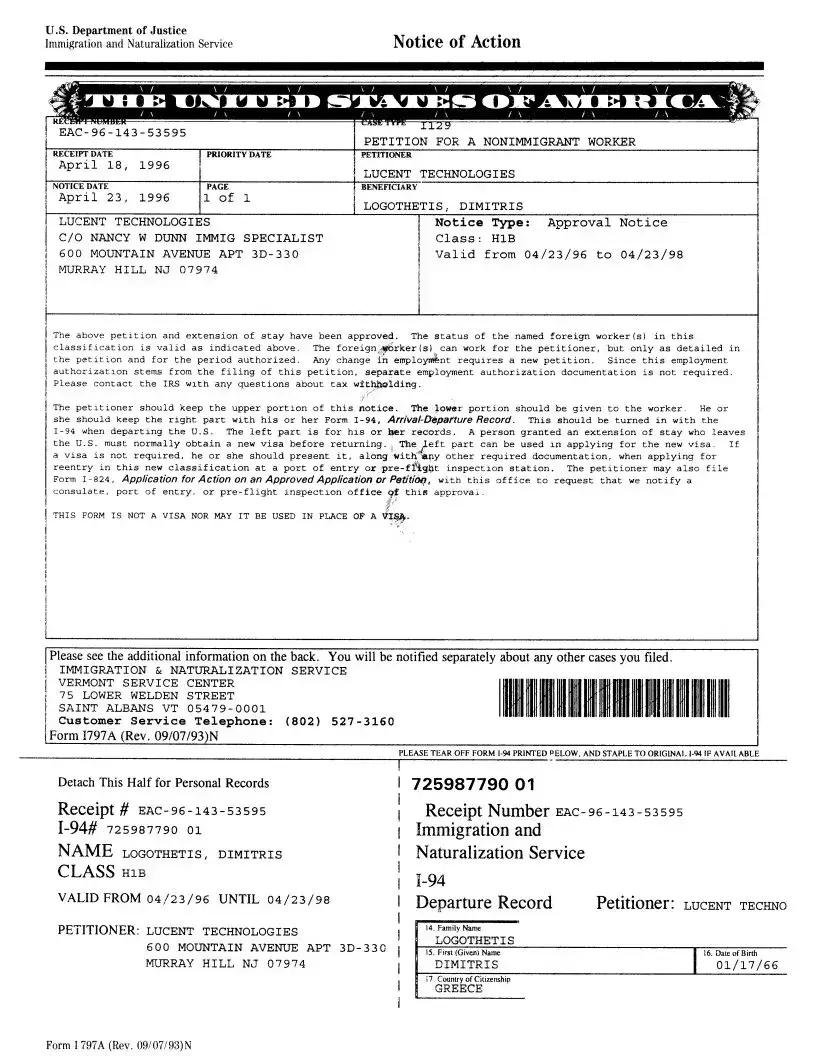What is the purpose of the I-797A form?
The I-797A form, officially known as the Notice of Action, is a document issued by the U.S. Department of Homeland Security. It serves to notify a petitioner that their petition for a nonimmigrant worker has been approved. When the petition is approved, the I-797A confirms that the beneficiary is authorized to work for a specific employer under specific conditions.
Who receives the I-797A form?
The I-797A form is sent to the petitioner, who is typically the employer that filed the petition. A lower portion of the form is meant for the worker, known as the beneficiary. This part should be kept with their Form I-94, Arrival-Departure Record, as it contains important information about their employment authorization.
How long is the I-797A valid?
The validity of the I-797A form is specified within the document itself. For example, if it states that the approval is valid from April 23, 1996, to April 23, 1998, then those are the dates during which the beneficiary can legally work for the employer indicated on the form. It is important to note that any changes in employment or status usually require the submission of a new petition.
What should the beneficiary do with their copy of the I-797A?
The beneficiary should keep their portion of the I-797A for personal records. Additionally, they need to present this document along with their Form I-94 when departing the United States. If they leave the country and wish to return, the I-797A can be crucial for applying for a new visa or for reentry into the U.S.
Do I need to apply for separate employment authorization with the I-797A?
No, there is no need to apply for separate employment authorization once the I-797A form has been approved. The employment authorization is inherently included in the approval notice. The form essentially serves as the authorization, allowing the beneficiary to work for the petitioner as long as they comply with the stipulations laid out in the petition.
What should I do if my visa has expired while holding an I-797A?
If a beneficiary's visa has expired, they generally need to apply for a new visa to reenter the U.S. This process often requires showing the I-797A form along with other necessary documentation. In some cases, it may be helpful to provide the left side of the I-797A when you're applying for your new visa at a consulate or embassy, as it contains important information validating your previous employment status.

